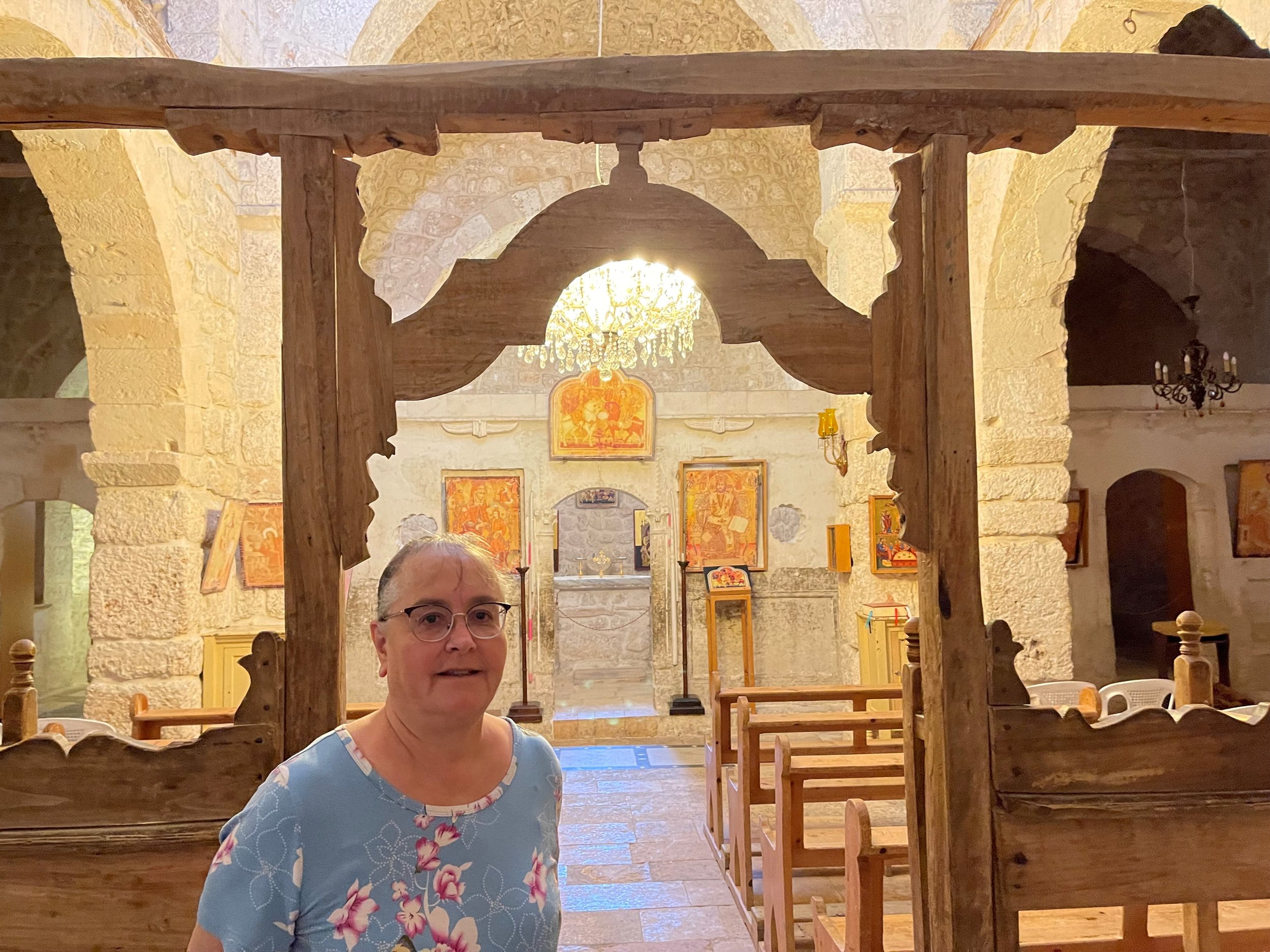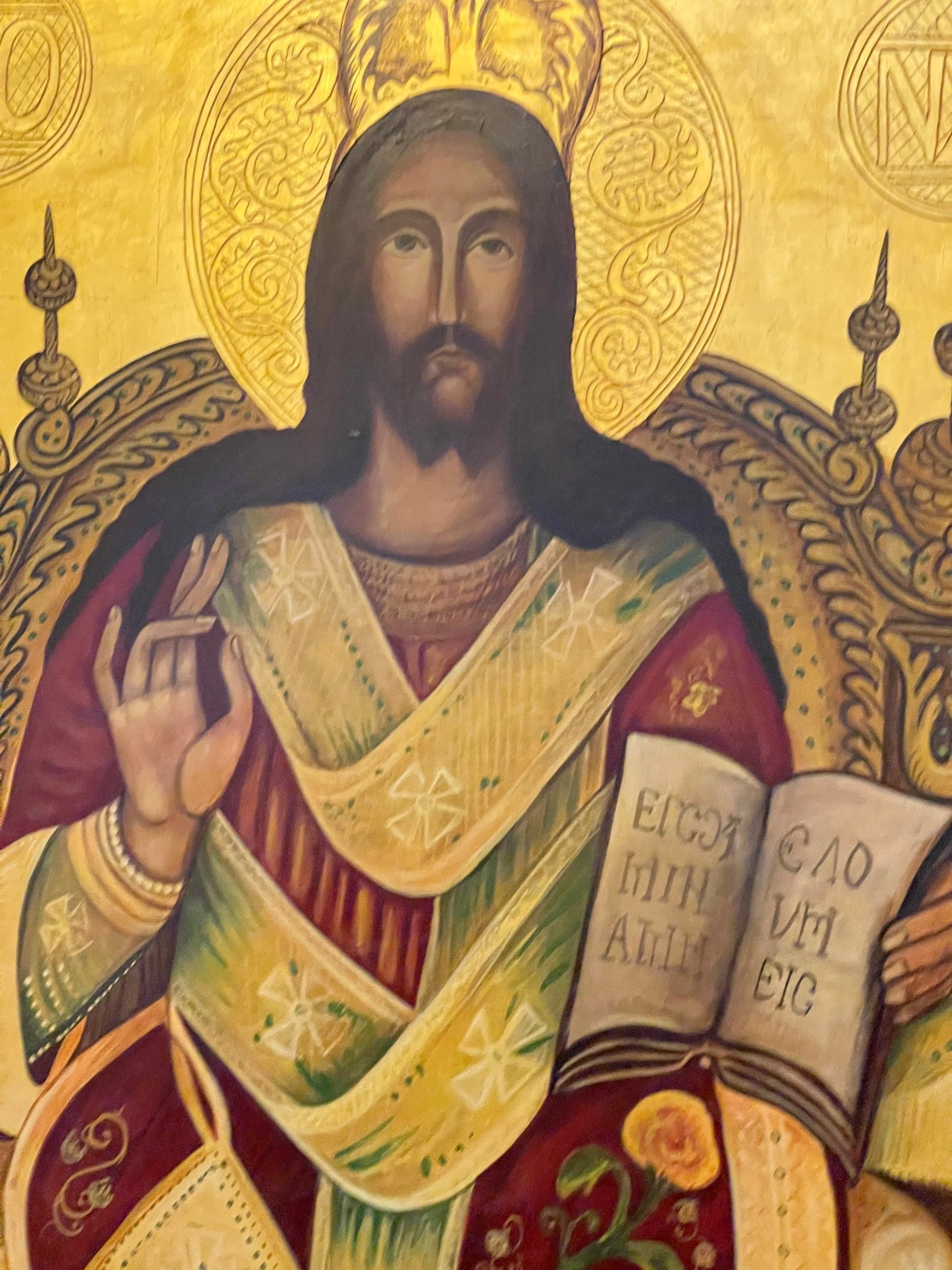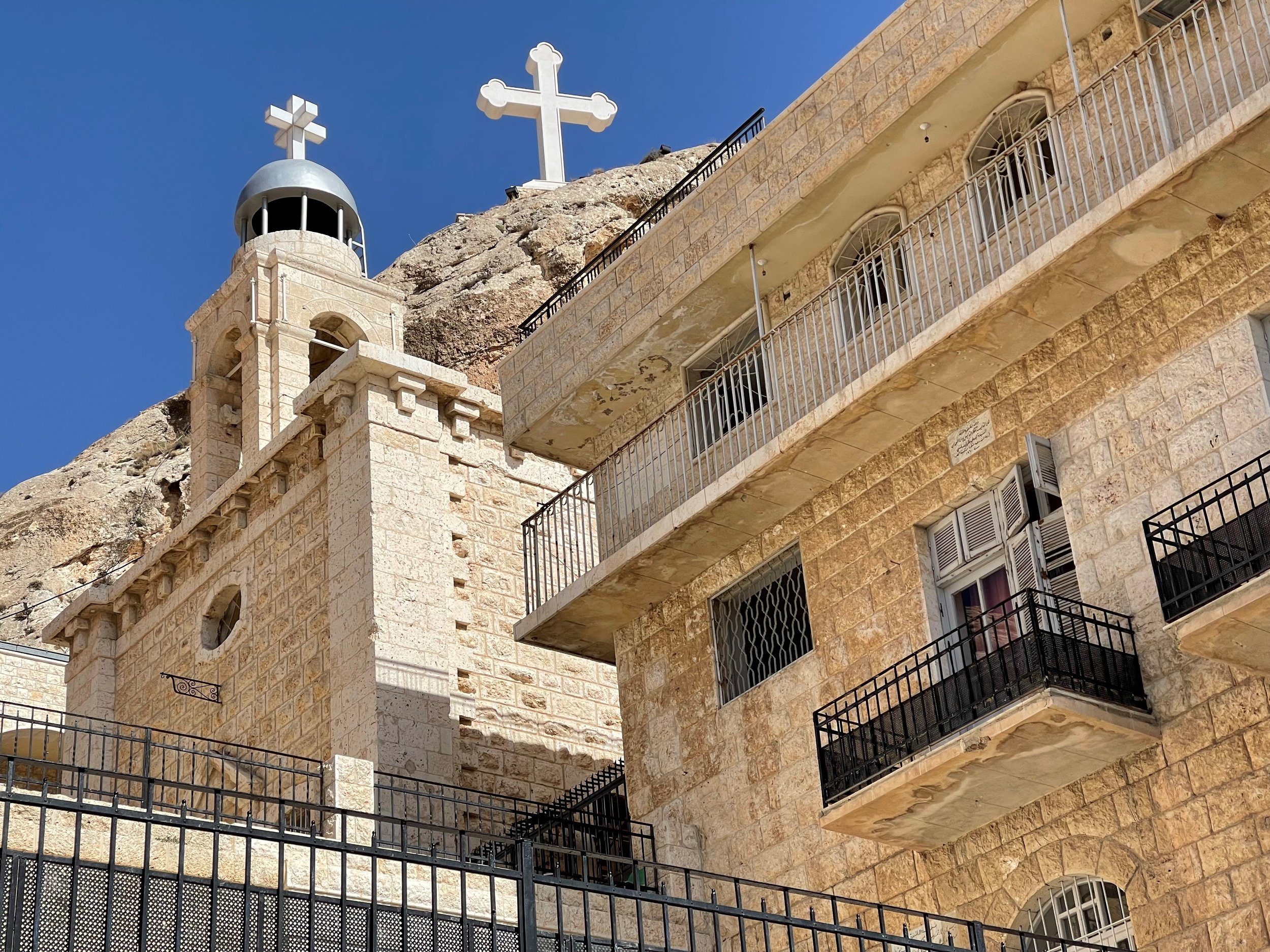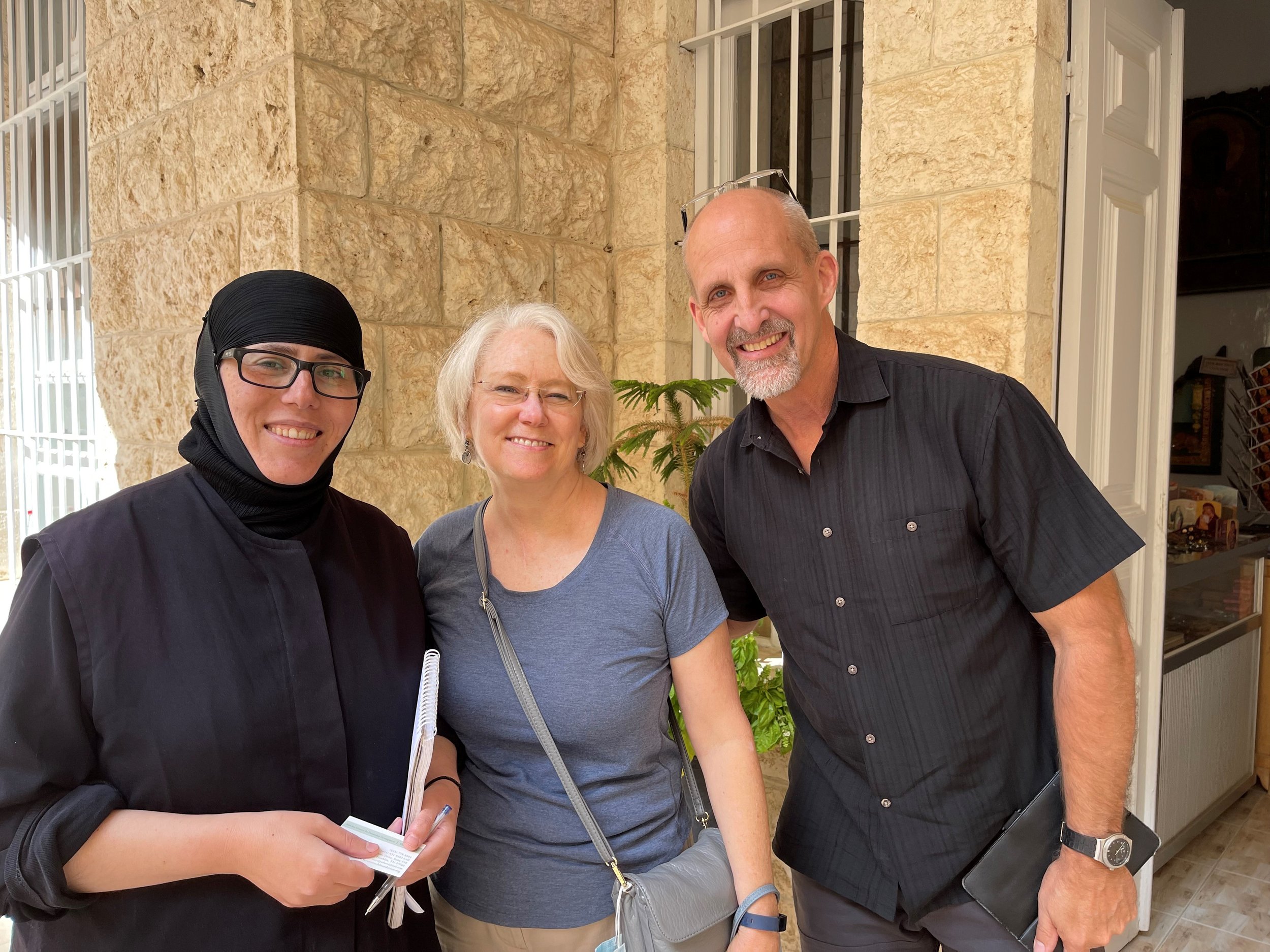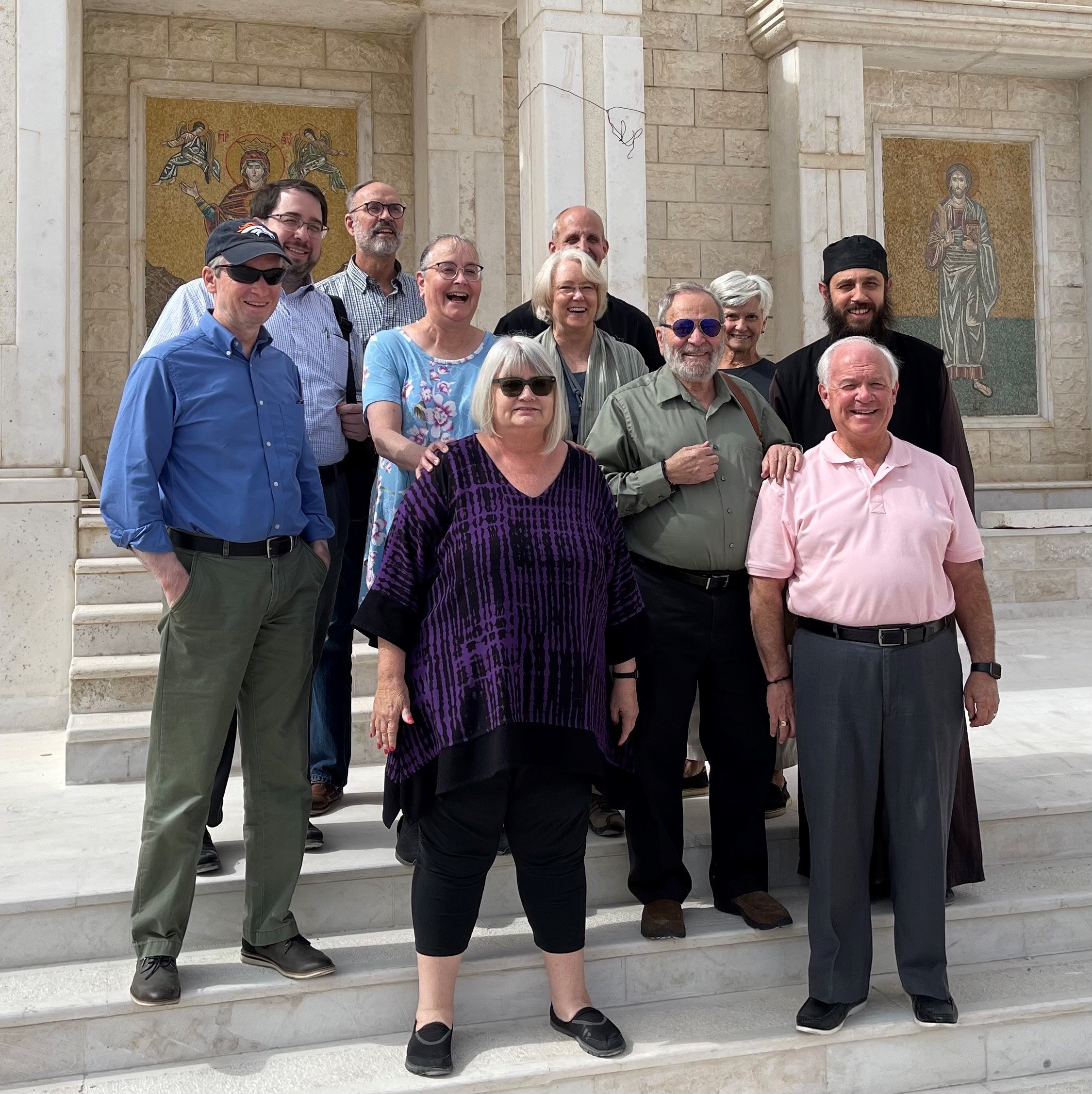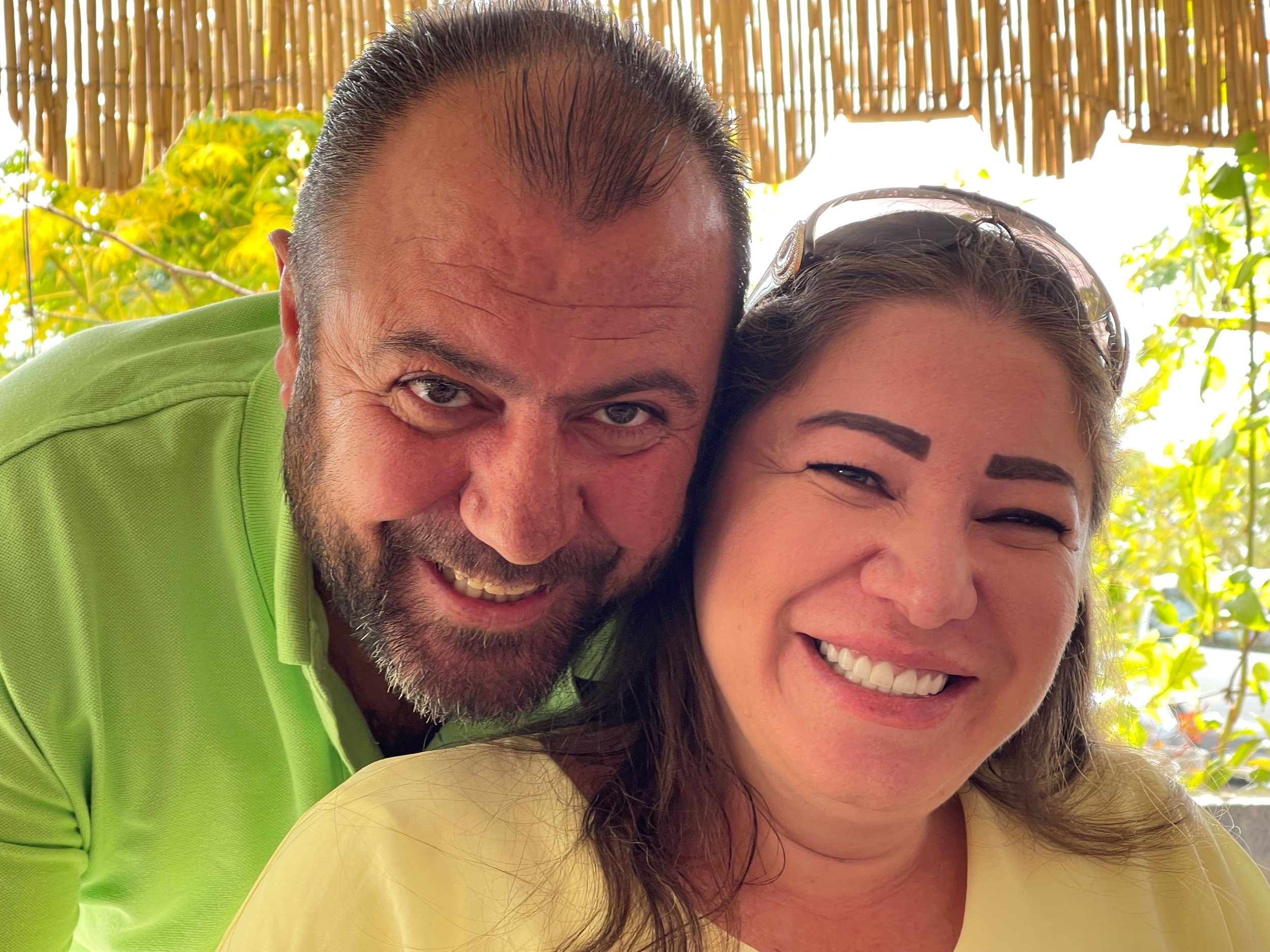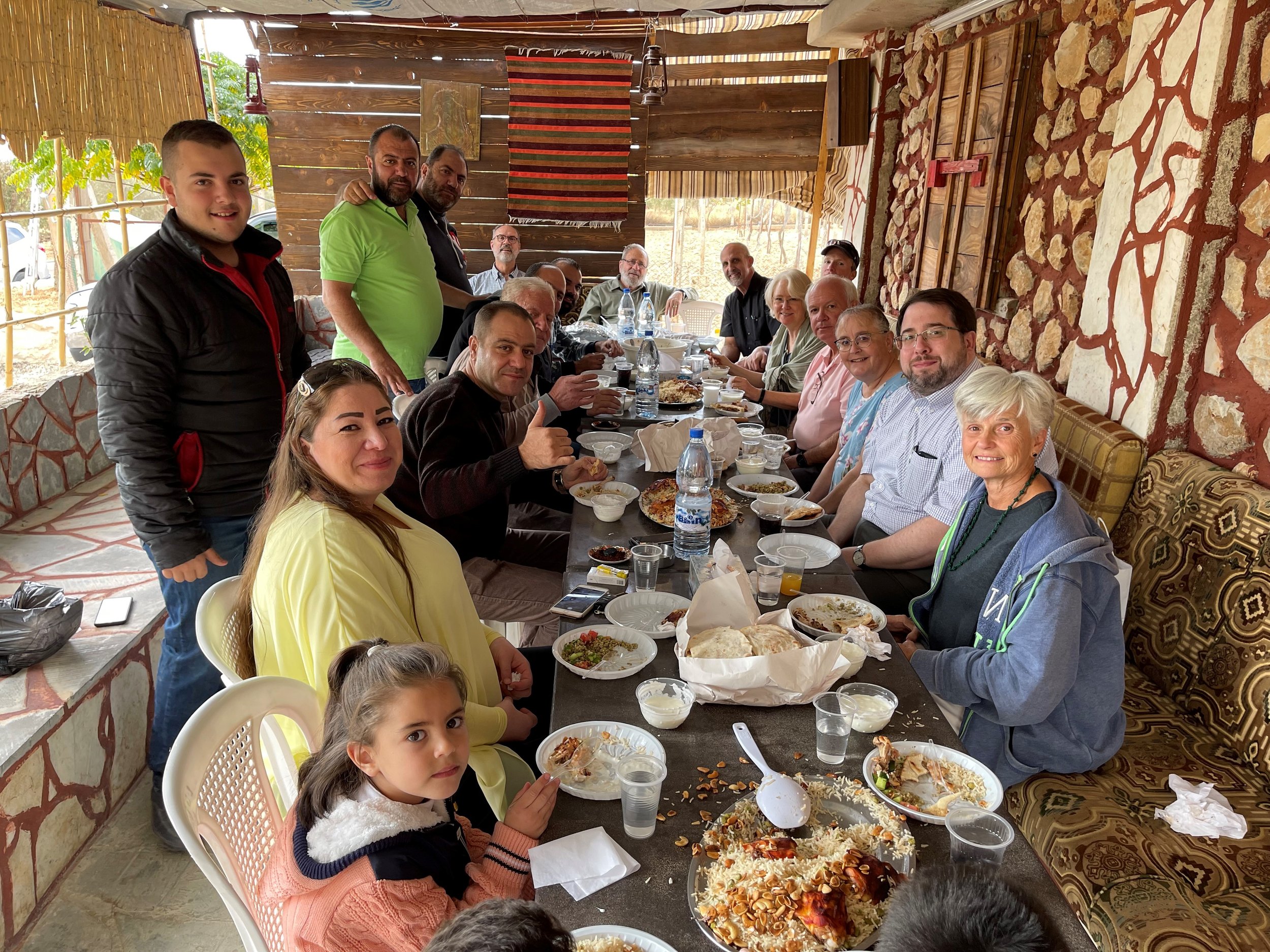Lebanon/Syria #8: Tending the Soil
While a large crowd was gathering and people were coming to Jesus from town after town, he told this parable: “A farmer went out to sow his seed. As he was scattering the seed, some fell along the path; it was trampled on, and the birds ate it up. Some fell on rocky ground, and when it came up, the plants withered because they had no moisture. Other seed fell among thorns, which grew up with it and choked the plants. Still other seed fell on good soil. It came up and yielded a crop, a hundred times more than was sown.” When he said this, he called out, “Whoever has ears to hear, let them hear.” Luke 8:4-8
We headed north from Damascus this morning on our way to ancient places, in this part of the world where faith was born. On this trip to Maaloula and Saidnaya, our “ecumenical” day as Marilyn put it, I was noticing the landscape along the road and this parable about soils struck me.
As we left the city, passing the reminders of war in the broken buildings of Douma, we quickly were surrounded by a much more desert-looking land. And yet, as we traveled the miles to the north there would be pockets of olive trees or small vineyards. The plants seemed scrubby and small compared to lush agricultural areas like the Bekaa in Lebanon, just on the other side of the mountains. And yet, these trees and vines were holding on, as if to say, “We are still here. Our roots are in this place, and someone is taking the time to tend to us. We will produce fruit. We will feed you and quench your thirst. We survive.”
Marilyn spoke of perseverance in a previous blog. I might add “persistence” to pair with that.
You may have never heard of either of the places we were to spend this day, and I would recommend to you that you should persist in researching them, for they are part of the “long obedience in the same direction,” that brought faith forward from the early church and handed it to those who would receive it in this day. The soil that seems so rocky, so unwelcoming to life, has been tended here, like those small groves and vineyards. It has produced churches that have much to teach us about perseverance and persistence.
In Maaloula, we first stopped at the church of Sts. Sergius and Bacchus. Sergius was a Roman general and Bacchus was one of his soldiers. Sent to persecute the early Christians in the late third century, this young faith was planted in them. They accepted Jesus and were martyred here in 297. This church, a Greek (Melkite) Catholic church, was built over the ruins of a Roman temple before the Council of Niceae. It suffered great damage from al Nusra when they took control of Maaloula in 2013. Ancient icons were stolen or destroyed or damaged, the marble communion table shattered. But on this day, we stood in a mostly restored and very ancient church, where samples of wood date to the year 300. Some of the icons have been recovered and restored as much as they can be. Our guide Samia walked us through this small place, giving us gifts of incense and oil on departure. Most of us lit the candles she offered.
Stop for a moment now and put yourselves in the third century. I know this is not easy to do but try. Icons are the written – not painted or drawn – word of God. They are scripture. Here is the baptism of Jesus by John. Here is the last supper. Here is the risen Christ. You know these stories from reading black words on white paper. But in the early days of faith, the gospel, the narrative of Jesus, was told in pictures. The articles of worship – candles and incense – represent the prayers of the people rising to God above. The cup and the plate are symbols of the sacrifice of Jesus for us and all who profess that faith. It is at the table where we remember this costly sacrifice. These things are easy for us as members of a Reformed church to cast aside and ignore.
But you are now standing in a place where rocky soil is all around, and these things speak the truth of the message of Jesus: When you do this, remember me. They tend. They enrich the rocky soil to produce fruit. Faith persists.
As a member of this team who grew up in the Catholic tradition, I watched my Presbyterian brothers and sisters as they watched a small video of this place before 2013, during 2013, and after it was taken back from the terrorists. They all exhibited a visceral, gut-wrenching response to the pictures of destruction. Deep down inside our reformed hearts, we feel the pain of what was lost, what could have been trampled to nothingness. We are connected to this place through not only the words (and pictures) of scripture but through the faithful and long-gone elders of faith who have tended this soil. They have persevered, and the faith persists.
From this place, we moved on to Mar Tekla, a Greek Orthodox convent named for St. Tekla (or Taqla), a first-century disciple of Paul. Again, there is no space to give you her back story, but you should explore it. Directly across the town and up on the mountain is a hotel, the El Safir, from which the terrorists took this place in 2013. The damage in the village is still clearly visible. Mar Tekla has an important story to tell from that time. Sister Ustina spent time with our teammates who did not climb to the top of the shrine to tell the story. She and thirteen other nuns hid in a small room for six months, until the terrorists came to their door. They were taken hostage for three months and ten days, eventually being freed in a prisoner exchange. They tell us they were treated well. In Maaloula, where people still speak the language of Jesus, Aramaic, these women sang for us. They served us coffee and sweets. They spent sweet time in communion with us in this place. Their place: the place they have tended and tend still because even after what they experienced, they returned. In the shrine high above this gathering place, we took off our shoes to stand on holy ground. They persevere. They persist. And the story of Jesus that took root here in rocky ground in the first century, moves on.
Our drivers in Syria, Imad and Fadi, are both Greek Orthodox church members from the city of Saidnaya, our next stop. They have been our constant companions and they took us to three of the holy places there. I wish I had more space to share, but again, these places dug into mountains and tended for centuries provide us rich visions of a faith passed forward to us. We visited the monastery of St. George. Our host was Abuna Isaac, who lives here with nine brother monks and five men and five women who will become monks and nuns. 52 weeks a year they host youth retreats from Thursday through Sunday. They are tending the rocky soil and producing fruit. We stopped at the St. Thomas Church, again, built over a Roman temple, the old cross rising high above the sun god symbols still on the walls. Our final visit was to the Convent of Our Lady of Saidnaya, the second most visited pilgrimage stop after Jerusalem. Here an ancient icon (attributed to St. Luke) of the mother of Jesus, is kept, along with many others. It is said that supernatural sightings and healings still happen. Who are we to doubt? Built into the mountains over the city, parts of it date back to the sixth century. Imagine the good soil that is built out of rocks tended for 1500 years. We climbed the steps and stood there today, overlooking the land that was defended from terrorists.
Coming back down into the valley, we experienced communion. Let us call it the “sacrament of the present moment,” as a sumptuous banquet was spread before us at the farm of Imad and his brothers, Iyad, Jihad and Ziad, Imad’s wife Maanal and their children, and their uncle George, for a big family reunion under a cooling tarp, marked with the insignia of the U.N. Committee for Refugees. George is an agricultural engineer, and his skills have created a productive farm out of that rocky soil. It was the most appropriate place we could be, after the experiences of the day in the churches. Rocky soil, tended, bearing fruit. Persisting.
From start to finish, we were surrounded by a great cloud of witnesses, some who have gone on to glory represented in icons old and new, and some who remain with us against all odds. We have traveled through the rocky soil tended by the saints of the church from the beginning until now. They have passed it forward and the tools for the building of soil are in our hands to do the same for those who would follow.
Let us be worthy. Let us celebrate. Let us remember.
by Julie Burgess, West Hills Church, Omaha, Nebr.

